Overview:
3D renderings help sell properties faster by providing potential buyers with compelling visualizations that clearly depict the final product, allowing them to envision themselves in the space and facilitating informed decision-making. The article supports this by highlighting how these advanced visuals enhance marketing strategies, generate increased interest, and create emotional connections, ultimately leading to quicker sales and higher engagement rates.
Introduction
In the competitive landscape of real estate, the ability to visualize potential properties has become a game-changer for developers and marketers alike. As traditional marketing methods give way to advanced visualization techniques, 3D renderings emerge as indispensable tools that not only enhance buyer engagement but also streamline the decision-making process.
These sophisticated visualizations bridge the gap between conceptual designs and tangible realities, allowing prospective buyers to immerse themselves in their future homes long before construction begins. By transforming abstract ideas into vivid representations, 3D renderings facilitate a deeper understanding of spatial dynamics, aesthetic appeal, and the overall essence of a property.
This article explores the multifaceted applications of 3D renderings in real estate marketing, underscoring their crucial role in attracting buyers, expediting sales, and fostering emotional connections that drive purchasing decisions.
Visualizing Potential: Selling Unfinished Properties with 3D Renderings
3D renderings are a vital resource in marketing incomplete real estate, showcasing the top how 3D renderings help sell properties faster by allowing potential clients to imagine the finished project while assessing the suitable level of detail. These sophisticated visualizations present high-fidelity images that accurately capture design elements, material choices, and the overall ambiance of the intended space. By translating abstract ideas into captivating visual depictions, purchasers gain a thorough comprehension of a space that may not yet exist physically.
This clarity not only fosters interest but also establishes realistic expectations, facilitating a more straightforward decision-making process for potential buyers. The immersive nature of architectural visualization fosters community connections, empowering future homeowners to engage meaningfully with their projects. Furthermore, the ‘Power of Pre-Sales Visualization’ plays a crucial role in this process, serving as a bridge between concept and reality, igniting interest and investment long before a project is physically realized.
The capability to visualize incomplete assets through advanced visualization methods demonstrates the top how 3D renderings help sell properties faster, significantly boosting engagement and raising the chances of purchase commitments. As noted by LCP360, ‘Residential visualizations have long proven to be a valuable tool in development projects, especially for architects.’ Moreover, 3D Floor Plans offer an aerial perspective of layout designs, assisting purchasers in comprehending the spatial dynamics of the project while enhancing client understanding and improving stakeholder communication, thereby emphasizing the significance of detail levels in architectural visualizations.
Transforming Renovation Projects: Attracting Buyers with Enhanced Visuals
In the realm of real estate, it is top How 3D renderings help sell properties faster, serving as a pivotal tool for transforming outdated properties into appealing, modern homes. These advanced visuals not only offer prospective buyers a compelling envisioning of renovation possibilities, effectively capturing their imagination, but they also reflect the meticulous detail and precision that define the essence of architectural design. Testimonials from pleased clients at J. Scott Smith Visual Designs highlight the emotional bonds created through our designs, enhancing client satisfaction and trust.
One client mentioned, ‘The visuals brought our vision to reality, making it easy to recognize the possibilities in our asset.’ Significantly, data shows that monthly views of 3D walkthroughs on sites like Redfin.com have increased by 563% since February, reflecting a rising trend among purchasers seeking visual depictions of renovation possibilities. This increase in interest emphasizes the significance of top How 3D renderings help sell properties faster by showcasing a home’s potential through lifelike visuals, which attract buyers and reveal the numerous possibilities inherent in assets that may otherwise be overlooked.
Furthermore, the integration of aerial photography and virtual tours in real estate marketing demonstrates the value of combining multiple visual services to enhance visibility and appeal. As Matterport keeps innovating with tools for producing high-quality photography and digital twins, the significance of 3D visuals is further strengthened in the marketing landscape. As one renovation expert aptly put it, ‘You only get one chance to make a first impression.’
This sentiment is especially pertinent in the context of the top How 3D renderings help sell properties faster, as they influence consumer perceptions and decision-making, ultimately affecting the chances of selling renovated assets and positioning them advantageously in a competitive market. The accuracy in our visuals captures every detail, from the texture of materials to the interplay of light and shadow, ensuring that the design essence resonates with prospective clients.
Comprehensive Floor Plans: Enhancing Buyer Understanding through 3D Visualization
3D renderings offer an invaluable resource for creating detailed floor plans that provide an improved comprehension of a layout and flow. Through these advanced visualizations, customers can effectively explore spatial relationships between rooms, assess the overall functionality of the space, and visualize the placement of their furniture. This clarity greatly aids in informed decision-making, reducing the likelihood of regret by ensuring that clients have a comprehensive understanding of what to anticipate from the asset.
Significantly, listings showcasing video, including 3D visuals, can generate 403% more inquiries, emphasizing their effectiveness in attracting customer interest. Furthermore, maximizing the impact of 3D floor plans can be achieved by leveraging analytics for refinement, ensuring mobile compatibility, offering customization options, and adding interactive features to enhance engagement. Case studies reveal that the utility of floor plans extends beyond initial viewings; they serve as crucial reference points, aiding buyers in recalling property details and facilitating smoother communication with agents.
The case study titled ‘The Power of Pre-Sales Visualization’ illustrates how visualizations empower developers by bridging the gap between concept and reality, enhancing project confidence and generating investment. For instance, developers who employed pre-sales visuals reported a 30% increase in early-stage investments. Tom Lyons and his team are revolutionizing real estate marketing in Belleville, Ontario, with SnapSnapSnap, showcasing top how 3D renderings help sell properties faster by enhancing the purchasing experience and turning them into a strategic advantage in real estate promotion.
By providing self-guided online tours, purchasers can investigate listings at their convenience, significantly minimizing the time Realtors spend on showings and enabling them to concentrate on finalizing transactions.
Speeding Up Sales: The Quick Turnaround of 3D Renderings for Listings
One of the top ways 3D renderings help sell properties faster is by offering real estate professionals a compelling advantage through the presentation of properties with impressive imagery almost immediately. This swift turnaround not only attracts potential buyers but also significantly enhances the appeal of projects to investors, as visually striking images can effectively communicate the project’s vision and potential returns. High-quality visuals streamline the approval process by providing clear and detailed representations that help stakeholders visualize the final outcome, reducing uncertainties and expediting decision-making.
For example, research shows that single-family homes traditionally average 50 to 100 days on the market; however, the top how 3D renderings help sell properties faster is by shortening this duration to approximately 33 to 70 days, demonstrating a marked improvement over standard photography. The surge in virtual tours, which experienced a 563% increase in monthly views during the pandemic, has led to 63% of home purchasers in 2020 making offers on properties sight unseen. This trend underscores the importance of immersive visual experiences in real estate.
According to Abbasi, a noted expert, ‘Virtual reality provides the opportunity to virtually tour many more homes in significantly less time, naturally enhancing sales efficiency and allowing for exposure to more potential clients.’ Incorporating high-quality 3D visuals into their marketing strategies is one of the top ways 3D renderings help sell properties faster, allowing agents to meet the evolving demands of buyers and enhance their overall sales effectiveness. Furthermore, collaborating with J. Scott Smith Visual Designs for initial visuals allows for a cooperative design phase, where iterative feedback from clients is integrated to enhance and confirm architectural concepts.
This strategic investment in quality visualizations is crucial for enhancing project appeal and facilitating informed decision-making.
Standing Out in the Market: The Marketing Power of 3D Renderings
3D visuals act as a gateway to the future of your project, providing a notable marketing edge by converting assets into visually stunning and unforgettable features. In an increasingly saturated real estate market, high-quality visuals are essential for capturing attention and generating interest across various platforms, including social media, websites, and print materials. Statistics indicate that the adoption of 3D virtualization and digital marketing trends has resulted in a 13% increase in product sales, demonstrating the potency of these tools in driving consumer engagement.
By utilizing 3D visualizations, real estate professionals can showcase the top how 3D renderings help sell properties faster, creating a strong brand presence and effectively appealing to a wider audience to enable quicker sales. As emphasized by industry experts, the top How 3D renderings help sell properties faster by allowing individuals to visualize the site before construction, underscoring the essential role of high-quality visuals in enhancing appeal, particularly in competitive markets. Furthermore, the power of pre-sales visualization serves as a bridge between concept and reality, highlighting the top how 3D renderings help sell properties faster by enabling developers to present a tangible asset that sparks interest and investment well ahead of the project’s physical manifestation.
The case study titled ‘Better Overview of the Asset’ illustrates how 3D visualization provides a detailed perspective of assets, allowing designers, engineers, and architects to identify strengths and weaknesses, leading to time and cost savings and enhanced construction processes. Additionally, with the SMEs segment expected to exhibit the fastest CAGR from 2024 to 2030, smaller businesses are increasingly utilizing 3D visualization software to strengthen their competitiveness and improve operational efficiency. This trend highlights the increasing significance of advanced visual tools in enhancing marketing strategies and presenting assets favorably to prospective customers, while generating enthusiasm about what’s ahead.
Engaging Content Formats: The Versatility of 3D Renderings in Real Estate Marketing
The adaptability of 3D visuals allows their use across various content formats, effectively meeting the diverse tastes of potential customers. From interactive walkthroughs that allow users to navigate spaces at their own pace to immersive virtual reality experiences that transport them into the property, these visual tools engage potential customers in innovative ways. Sophie Hunt, a Digital Marketing Specialist at Harding+, emphasizes this by stating, “Interactive content is a great way to grab attention and get people engaging with your brand and solutions.”
This multifaceted approach not only broadens the audience reach but also enhances the marketing strategy, aligning with current market trends. A significant case study reveals that most mobile shoppers prefer product configurators with 360-degree spins over 2D presentations, enhancing their ability to judge products accurately and leading to improved purchase decisions. Notably, a recent statistic reveals that 14.2% of marketers face challenges in sourcing affordable skilled animators, highlighting the need for effective, versatile content formats that can elevate real estate marketing efforts.
Moreover, the testimonials from clients of J. Scott Smith Visual Designs emphasize the significance of trust and dependability in architectural visualization, with one client mentioning, “The quality of the visuals surpassed our expectations and truly captured the essence of our project.” This proves that exceptional results stem from a focus on client satisfaction. By utilizing the advantages of 3D visualizations, including their uses in medical imaging and training simulations, real estate professionals can leverage the top How 3D renderings help sell properties faster to better address the changing needs of today’s customers, ultimately enhancing engagement and conversion rates.
Creating Emotional Connections: How 3D Renderings Influence Buyer Decisions
3D renderings possess a remarkable capacity to forge emotional connections with potential clients by depicting residential spaces in ways that align with their aspirations and lifestyles. These visuals go beyond simple representation; they invite potential customers into a narrative that evokes feelings of comfort, excitement, and belonging. This emotional engagement plays a pivotal role in the decision-making process, enabling individuals to envision themselves inhabiting the space, thereby significantly enhancing the likelihood of a successful sale.
Recent research indicates that 65% of US customers prioritize satisfying experiences over compelling advertisements, underscoring the importance of relatable visuals in influencing purchasing decisions. Furthermore, psychologists assert that emotional engagement is a crucial factor in real estate transactions, tapping into the deeper motivations of purchasers. As noted by Logan Chierotti, CEO of LOGANCHIEROTTI.COM, ‘As the old saying goes – sell the sizzle, not the steak.’
This sentiment is echoed in studies highlighting the top ways 3D renderings help sell properties faster by fostering connections that drive purchasing decisions, particularly in light of shifting housing preferences post-COVID-19. The case study titled ‘Impact of Economic Instability and COVID-19 on Housing Preferences’ illustrates how these factors have influenced buyer motivations, revealing a trend towards real estate in urban edge areas and near green spaces. This shift emphasizes the necessity for residential property professionals to analyze and share data with investors, aligning emotional engagement through visuals with data-driven decision-making.
Furthermore, the exceptional 3D renderings and visual documentation services provided by J. Scott Smith Visual Designs, which utilize advanced technologies such as infrared scanning and drone photogrammetry, demonstrate the top ways 3D renderings help sell properties faster by effectively showcasing functionality and aesthetics. Testimonials from satisfied clients further reinforce this, showcasing how these services enhance client satisfaction and marketing effectiveness, ultimately demonstrating the power of pre-sales visualization in generating interest and investment.
Conclusion
The multifaceted applications of 3D renderings in real estate marketing reveal their indispensable role in enhancing buyer engagement and streamlining the selling process. By transforming unfinished properties into visually captivating representations, these advanced visualizations allow prospective buyers to grasp the potential of spaces that may not yet exist. The ability to accurately depict design elements, material choices, and spatial dynamics fosters realistic expectations, ultimately facilitating informed decision-making.
Moreover, the significance of 3D renderings extends beyond mere aesthetics; they serve as powerful tools for emotional connection, enabling buyers to visualize their future within a space. This emotional resonance is paramount, as research indicates that satisfying experiences significantly influence purchasing decisions. The integration of interactive content formats further enhances buyer engagement, catering to diverse preferences and expanding market reach.
In a competitive real estate landscape, the strategic use of high-quality 3D renderings not only accelerates sales but also establishes a robust brand presence. By bridging the gap between concept and reality, these renderings empower developers and marketers to attract investment and drive interest well before a project is realized. As the market continues to evolve, leveraging advanced visualization techniques will remain a key factor in successfully positioning properties and meeting the demands of discerning buyers.
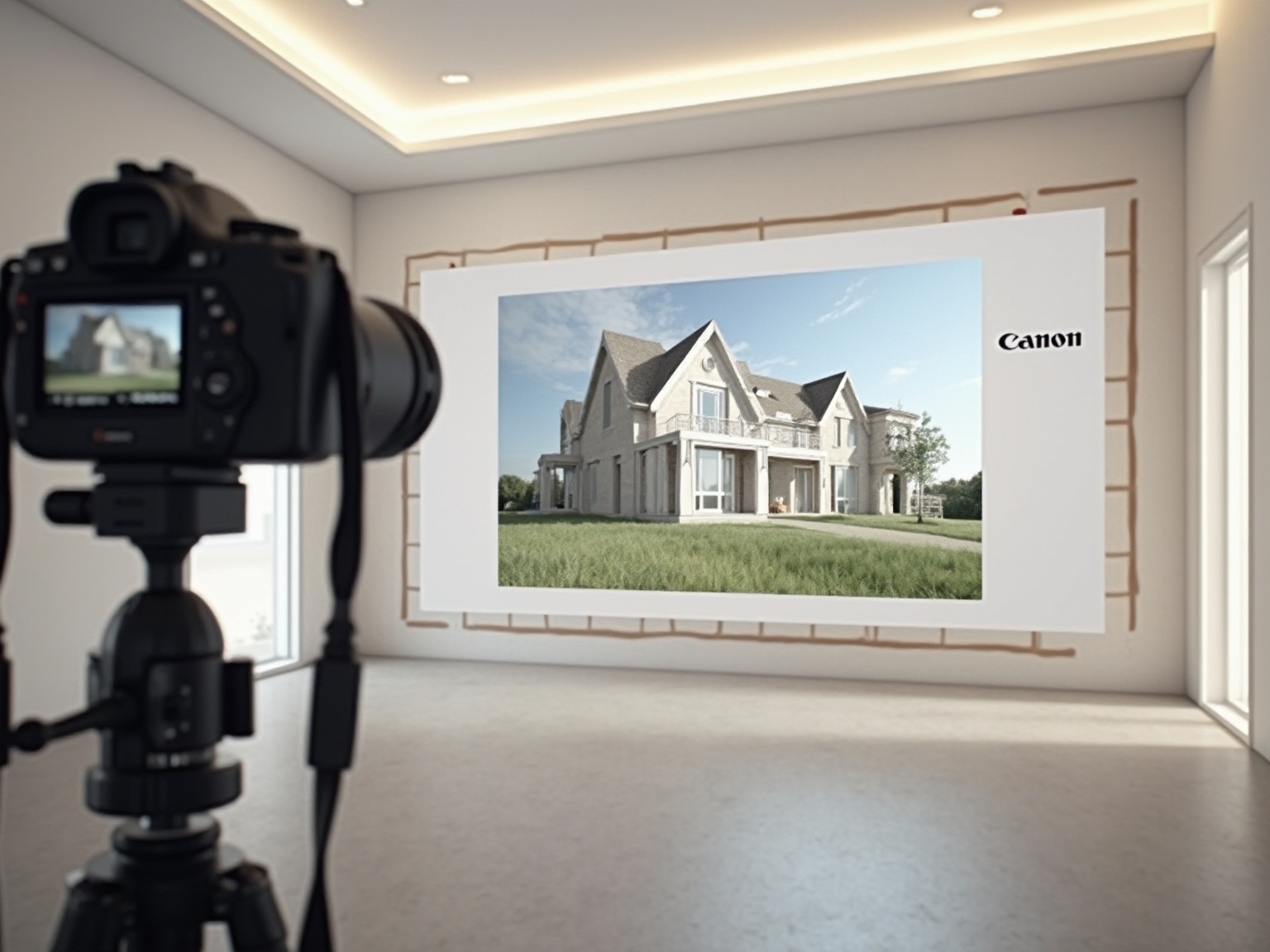
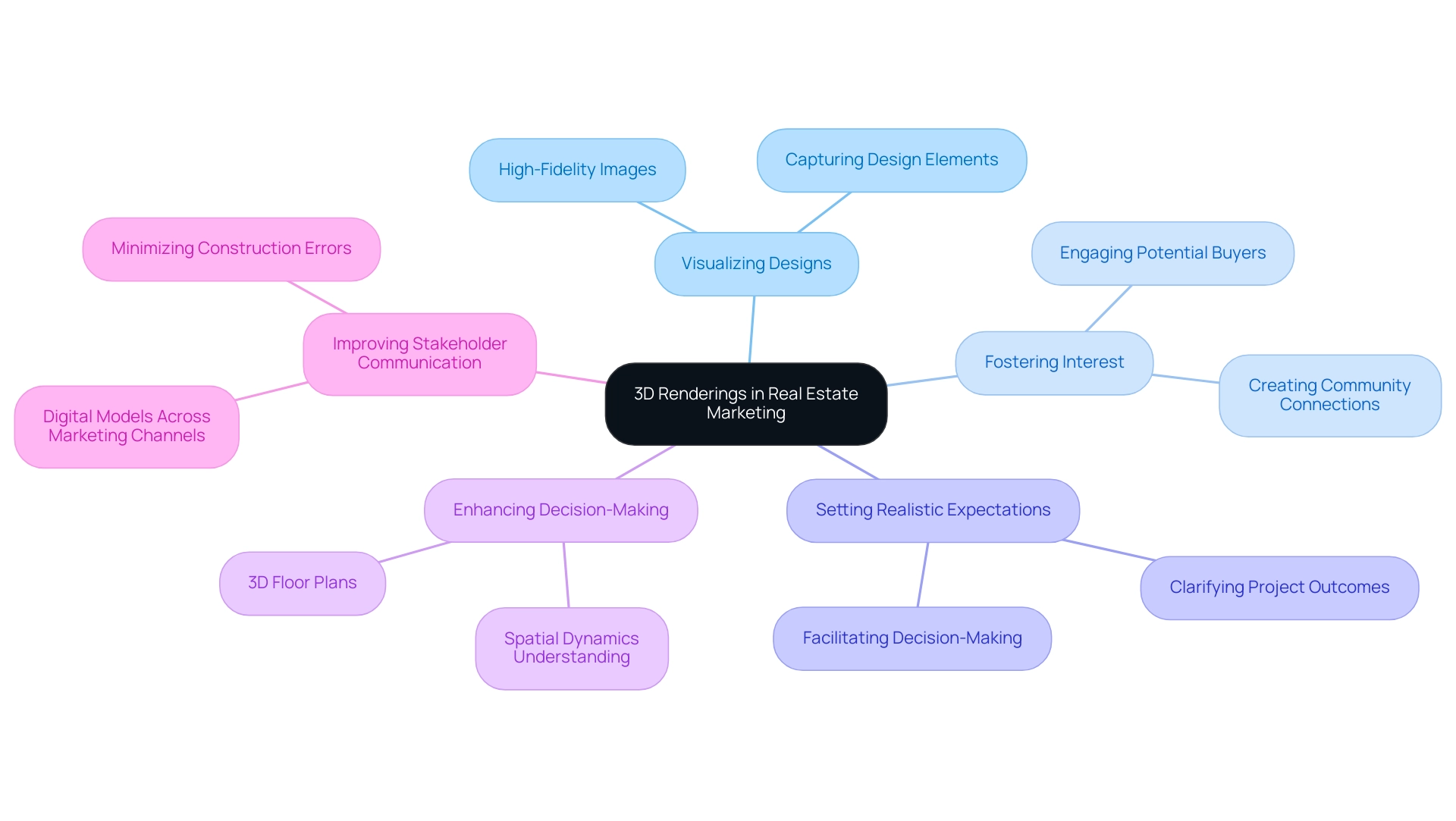
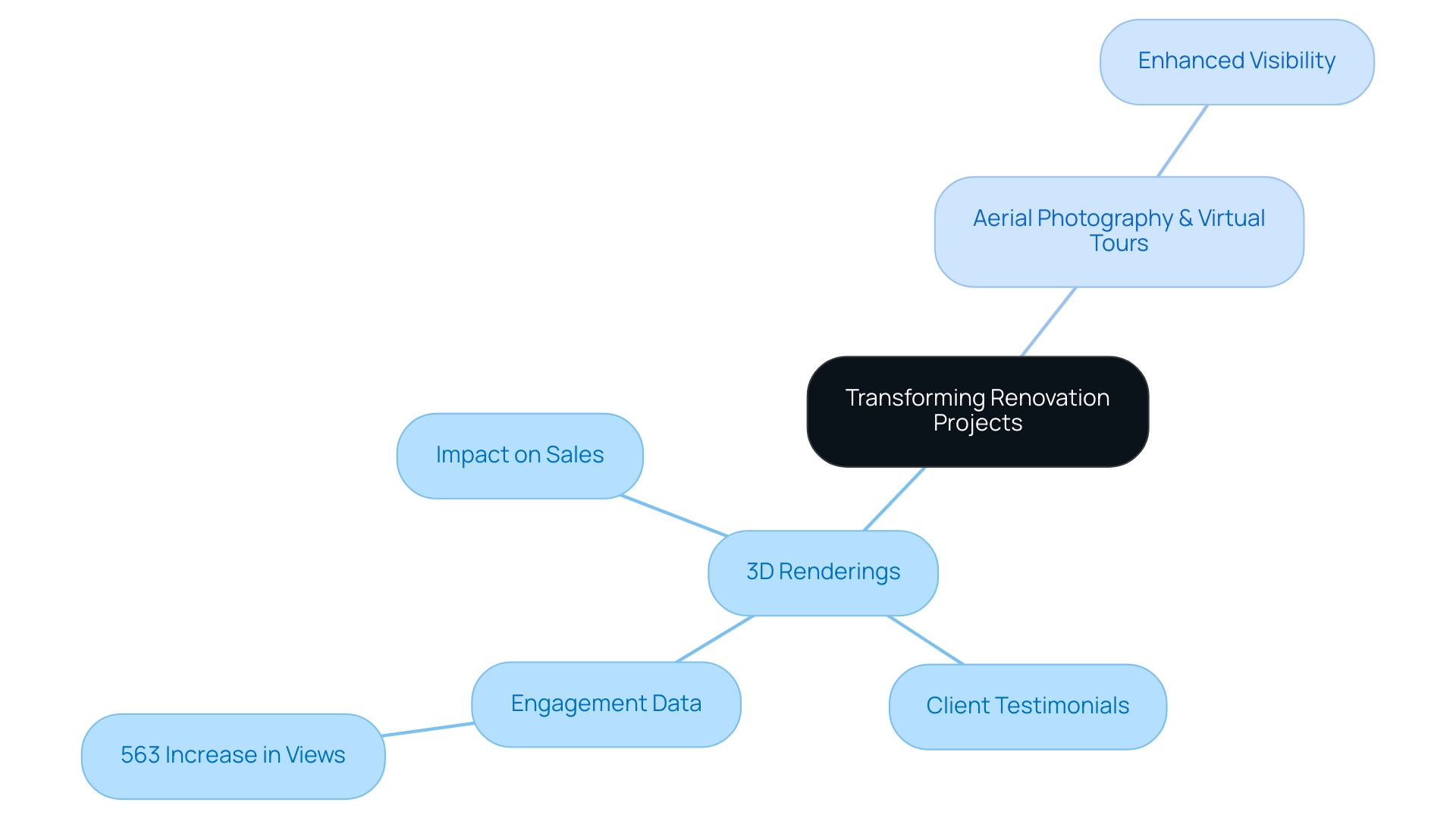
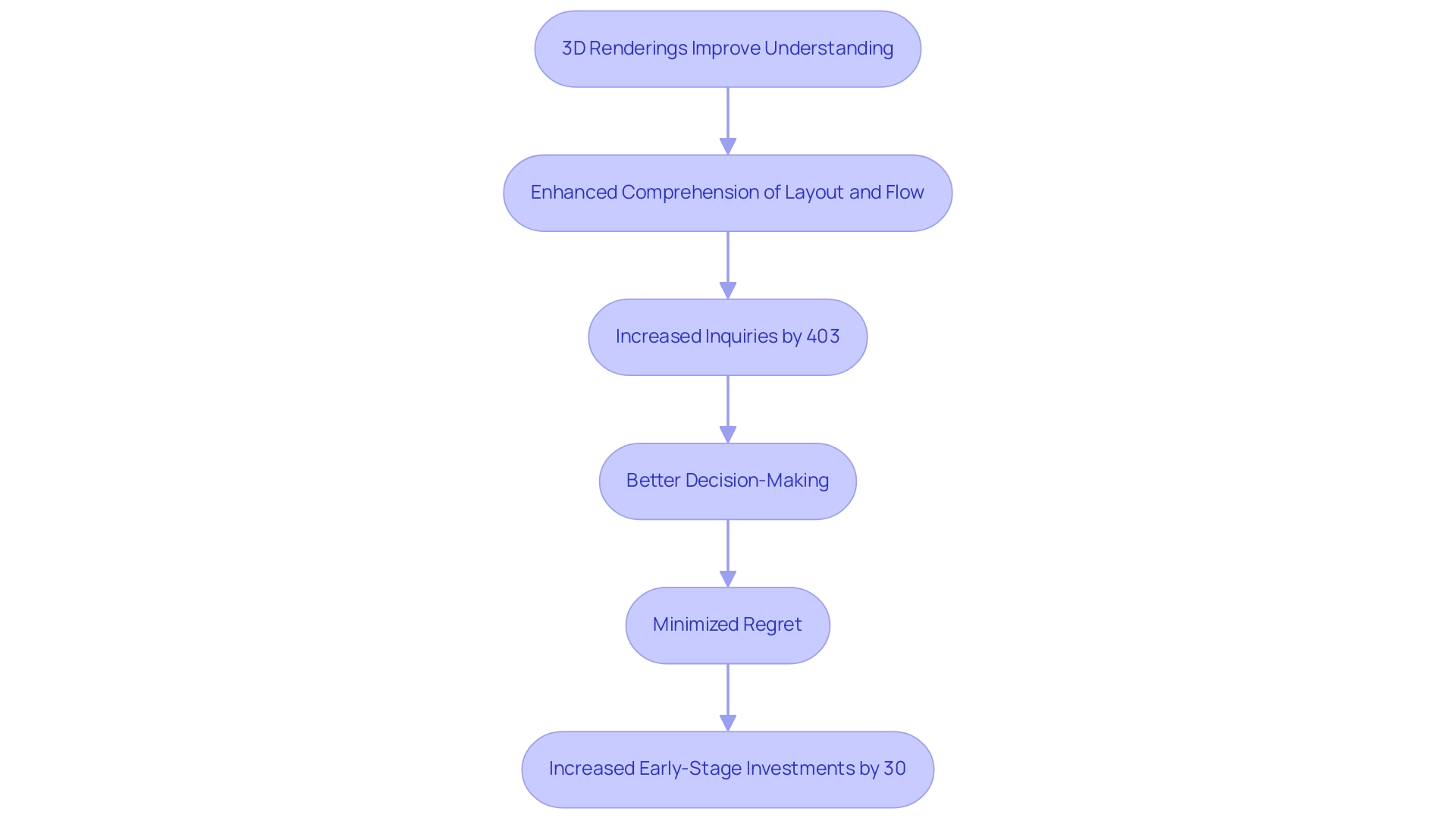
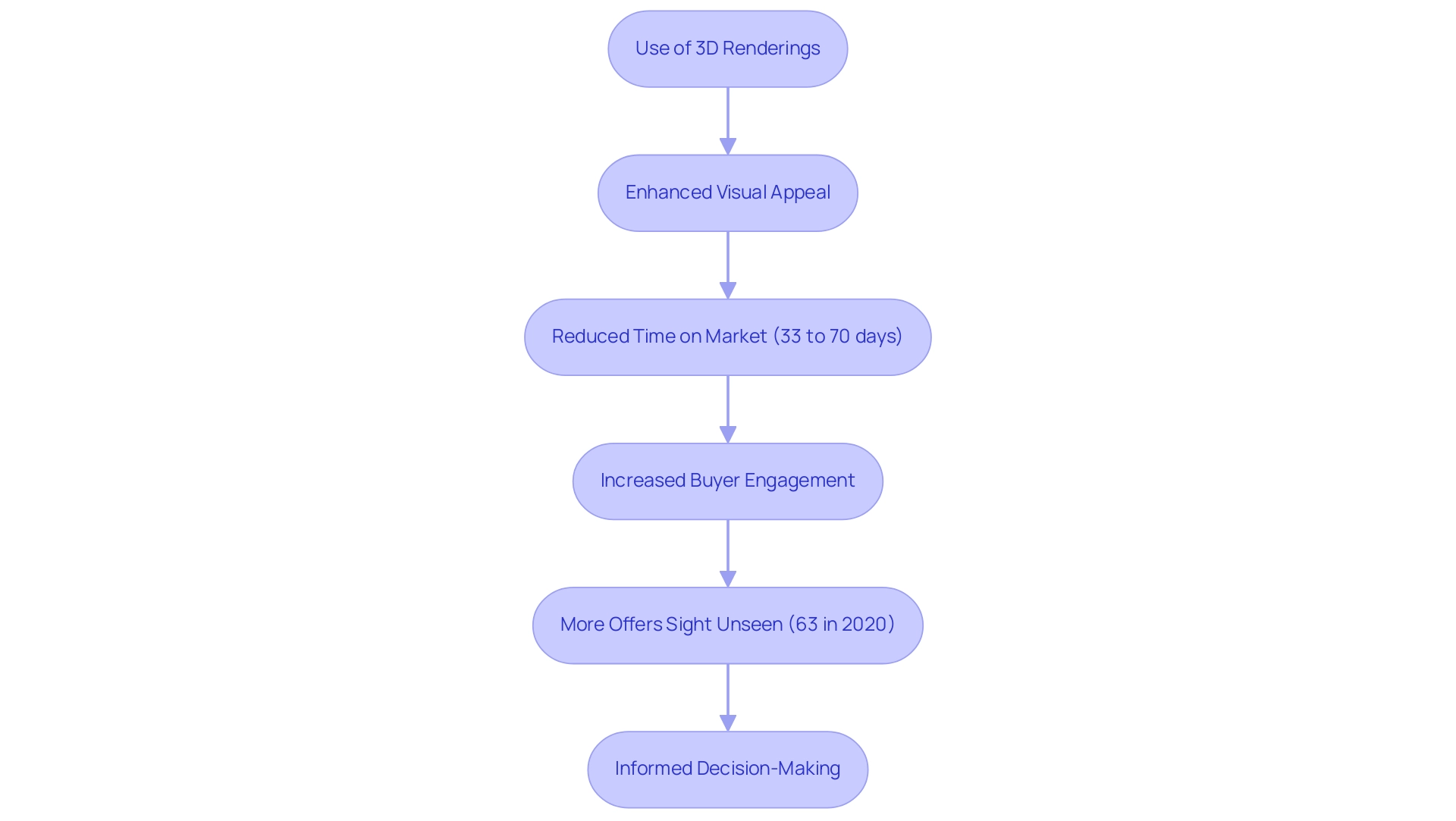
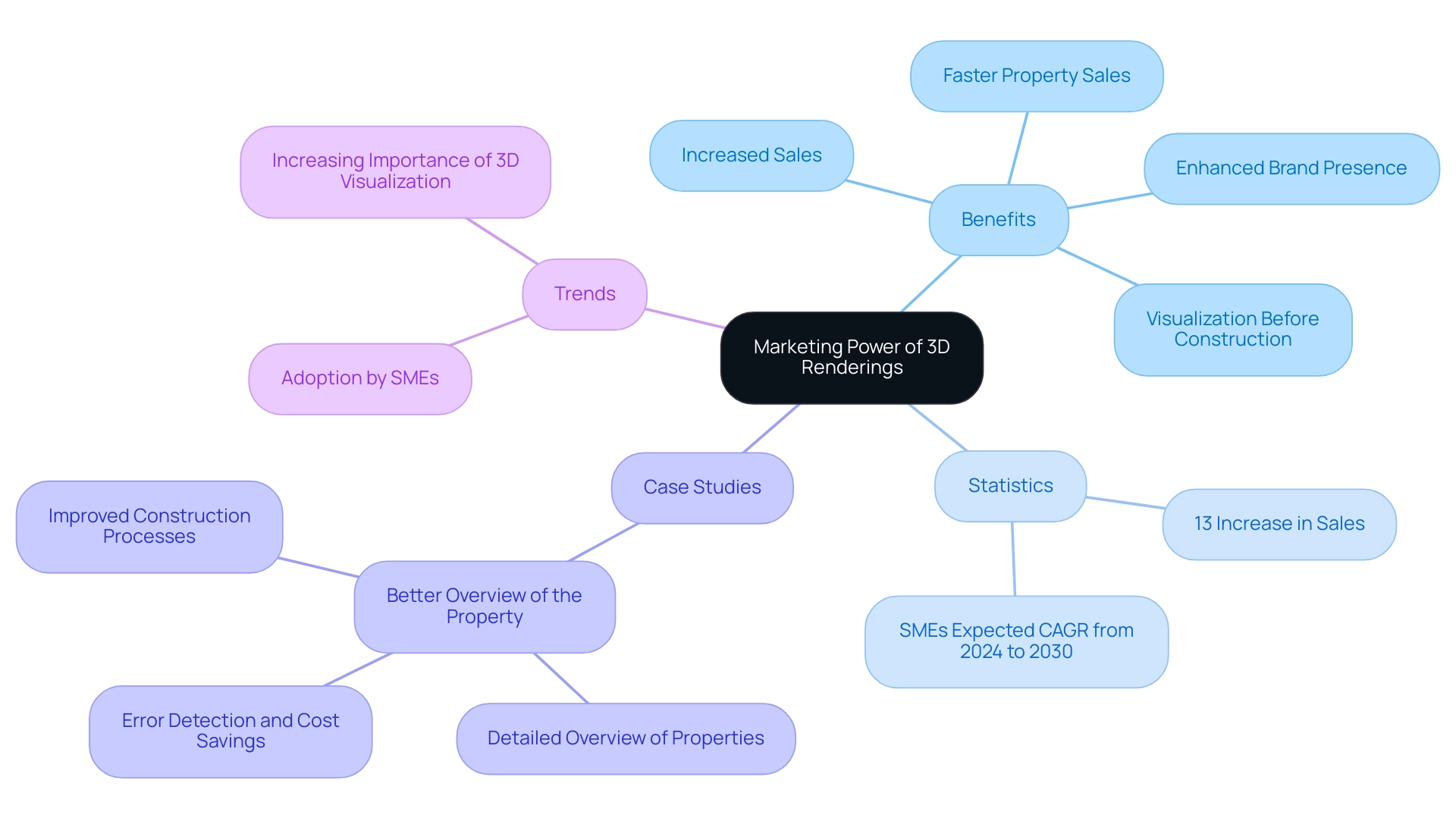
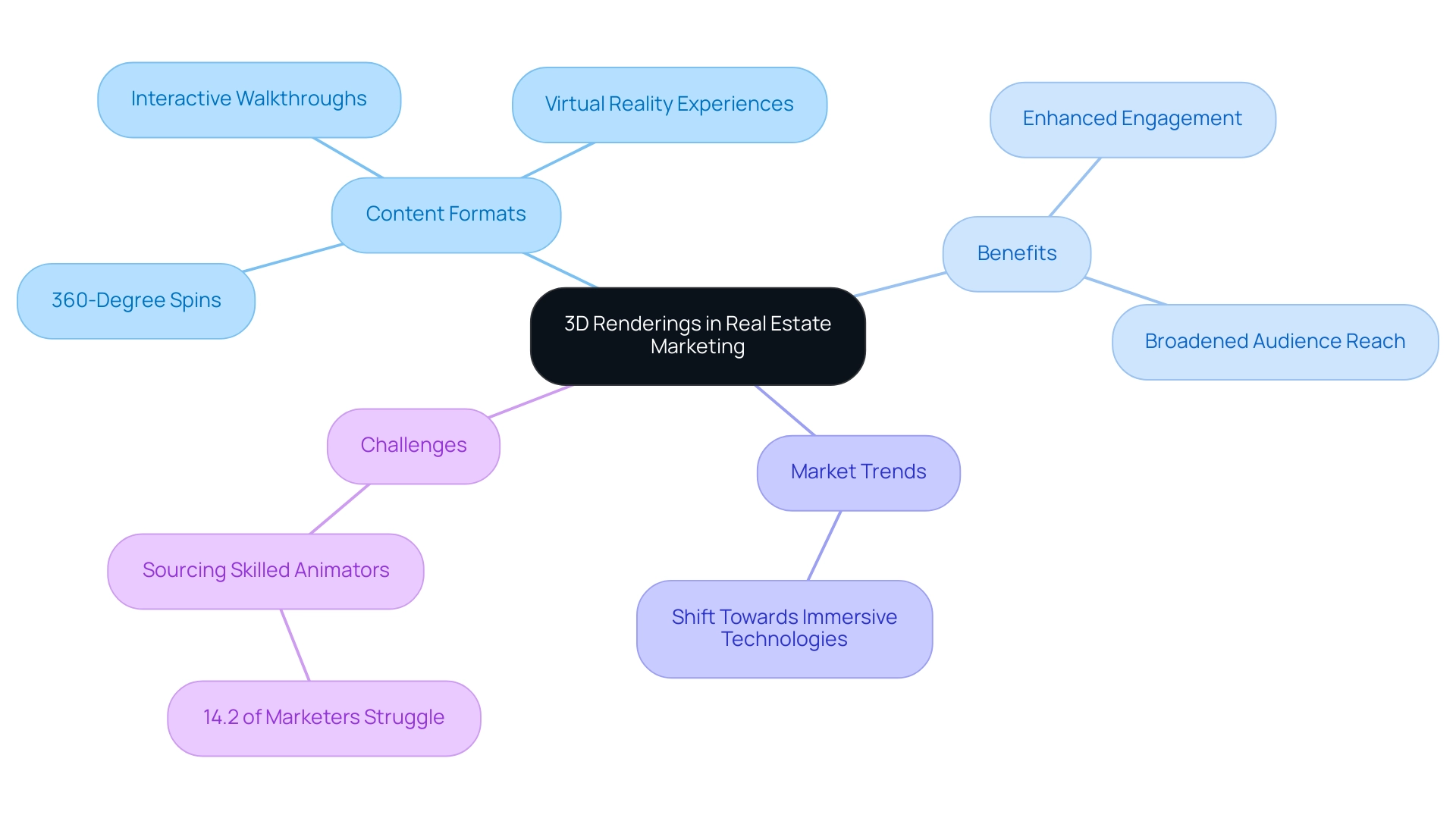
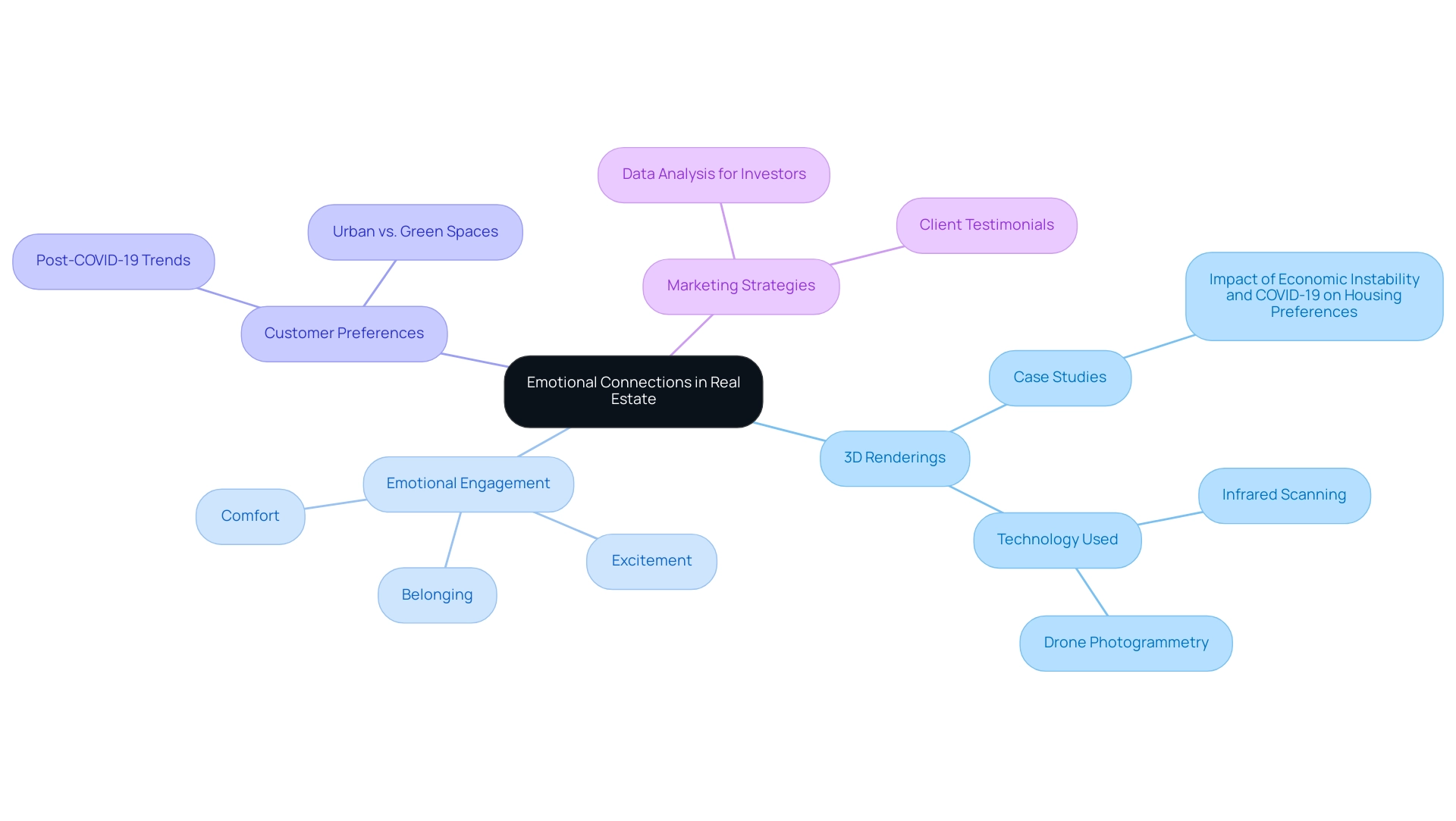
0 Comments